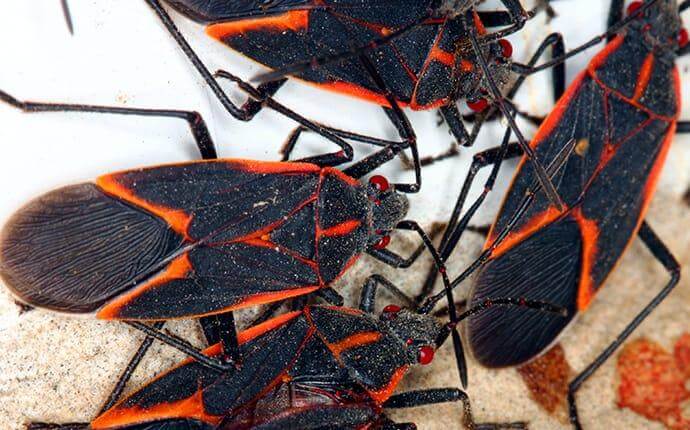There are many unfavorable conditions that can drive pests into San Antonio homes. If we get a long drought, they may enter in search of moisture. If we get a lot of rain, they may try to escape over-saturated soil. If it gets too hot, they may look for a shaded place to hide from the baking sun. If it gets too cold, they’ll seek a place of warmth. While the winters in San Antonio aren’t necessarily a time of year when we have more pests getting into our homes, fall is still a good time to take steps to keep pests out.
Reduce Entry Points
There are a surprising number of ways San Antonio pests can get into homes. Use a caulking gun, expanding foam, wire mesh, a repair kit, or some good old fashioned wood to patch things up.
- Window and door frames can develop gaps around them.
- Window and door screens can be damaged by pests and the interior frame can be chewed on by pests.
- Weatherstripping and door sweeps can be damaged by mice and rats and can allow quick access for many pests.
- Gaps around pipes that pass through your foundation wall can be a superhighway for pests.
- Rotting sole plates (also called sills) are an easy target for wood-damaging pests, and the holes these pests create will allow moisture pests to get into your San Antonio home.
- Cracks in foundation walls, especially around windows, are a common entry point.
- If a pest gets on your roof, it can create many entry points. They’ll scratch at gaskets around exhaust pipes, seals around roof penetrations, and they will push through roof-soffit intersections.
Reduce Moisture
Some pests are drawn to moisture, mold and rotting wood. Addressing moisture issues around your home can reduce these pests and keep your home from becoming infested.
- Clear your gutter system from top to bottom. It is vital that rainwater finds a path down and away from your home. Also, fix any breaks in your gutters or downspouts.
- Create space between the plants in your landscaping to allow for good airflow. This helps to quickly dry top soil.
- Remove tree branches or palm fronds that create areas of excessive shade. Some shade is nice but too much shade can create conditions for dampness. The key is to inspect your home for damp areas and determine whether or not tree canopy is contributing to the issues.
Reduce Hiding Spots
A San Antonio yard that has lots of hiding places is going to be a playground for bugs and animals. Some of the places pests will hide are obvious. Others are not so obvious.
- Extra plants. The more overgrowth you have, the happier pests will be. They use overgrowth for shade and to help protect them from bird predators.
- Brush piles. Any pile of organic material such as leaves, sticks, wood, etc. will be a perfect location for pests to hide.
- Rocks. The more rocks you have, the more pests you’ll have. Rocks are an ideal place to hide from the sun.
- Piles of objects. Any objects can provide shade from the sun and give all pests a place to hide, but stacks of objects are a particularly attractive place for Norway rats to create their burrows underneath.
Reduce Pathways
There are many pests that can climb trees and get onto your roof. Some are small and are able to climb up through your downspouts. Put wire mesh in the bottom of your spouts to allow the water out but prevent pests from getting in. Trim tree branches that go near your roofline to prevent roof rats, squirrels, and other critters from getting onto your roof. Anything that can provide a pathway to your roof should be addressed.
Reduce Pest Populations
When you reduce insects and other bugs around your home, not only do you remove them as pests, you reduce the pests that eat them. The best way to do this is to reach out to Romney Pest Control. We offer residential pest control plans that help San Antonio residents keep their homes free of pests. We’re here to help.




